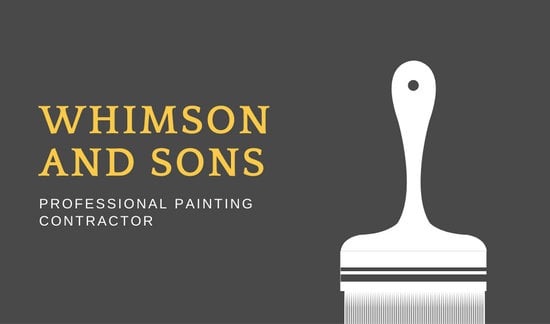Discover Exactly How Seasonal Impacts Can Impact The Efficiency Of Industrial Outside Painting And Find Out The Most Beneficial Times To Ensure Resilient Outcomes For Your Job
Discover Exactly How Seasonal Impacts Can Impact The Efficiency Of Industrial Outside Painting And Find Out The Most Beneficial Times To Ensure Resilient Outcomes For Your Job
Blog Article
https://www.documentjournal.com/2022/11/maxwell-alexandre-the-shed-pardo-e-papel-painting-sculpture-brazilan-art/ Create By-Regan Skafte
When you're planning an industrial exterior paint task, seasonal elements can make or break your results. You'll wish to consider exactly how temperature level and moisture impact paint application and drying times. Selecting the best season can ensure your paint sticks correctly and lasts longer. However which periods are absolutely the very best for this type of work? Let's explore the crucial elements that can impact your job's success.
The Influence of Temperature Level on Paint Application
When you're preparing a business external painting task, the temperature level can significantly impact exactly how well the paint sticks and dries out.
Ideally, you intend to paint when temperatures vary in between 50 ° F and 85 ° F. If it's as well cold, the paint might not heal correctly, causing problems like peeling off or cracking.
On the other side, if it's as well hot, the paint can dry out too swiftly, avoiding proper bond and resulting in an uneven surface.
You ought to additionally think about the moment of day; early morning or late afternoon supplies cooler temperatures, which can be extra favorable.
Always examine the producer's recommendations for the particular paint you're making use of, as they usually give guidance on the excellent temperature level array for optimum results.
Humidity and Its Result on Drying Times
Temperature isn't the only environmental aspect that influences your commercial external painting project; moisture plays a considerable function as well. High moisture degrees can slow down drying times substantially, impacting the total quality of your paint job.
When the air is saturated with dampness, the paint takes longer to treat, which can lead to concerns like inadequate adhesion and a greater risk of mold development. If you're repainting on a specifically moist day, be planned for extensive wait times in between coats.
why not check here to keep track of neighborhood weather conditions and strategy appropriately. Ideally, go for moisture levels between 40% and 70% for optimal drying.
Keeping these consider mind ensures your project stays on track and provides a long lasting surface.
Best Seasons for Commercial Exterior Painting Projects
What's the best time of year for your industrial external paint jobs?
Spring and early loss are typically your best choices. Throughout these periods, temperature levels are moderate, and moisture degrees are commonly lower, producing excellent conditions for paint application and drying.
Stay clear of summer season's intense heat, which can create paint to completely dry as well promptly, leading to inadequate bond and surface. Likewise, winter season's cold temperature levels can prevent correct drying out and curing, risking the long life of your paint task.
Go for days with temperatures in between 50 ° F and 85 ° F for optimal outcomes. Remember to check the neighborhood weather prediction for rainfall, as wet conditions can destroy your project.
Preparation around these variables guarantees your paint project runs efficiently and lasts much longer.
Conclusion
To conclude, planning your business external painting jobs around seasonal considerations can make a substantial distinction in the end result. By organizing work throughout the optimal temperatures and humidity levels, you'll ensure better bond and drying times. Remember to watch on neighborhood weather report and pick the right time of year-- spring and early autumn are your best bets. Taking these actions will help you attain a durable and professional coating that lasts.
